As a Syringe Filters Manufacturer
As a trusted and experienced syringe filter manufacturer, we take pride in our ability to provide high-quality filtration solutions to meet the diverse needs of our customers. With our state-of-the-art manufacturing facility and a dedicated team of experts, we are committed to delivering superior products that excel in performance, reliability, and durability.
What Is A Syringe Filter?
A syringe filter is a filtration device used to remove impurities from liquid samples. It consists of a plastic housing with a membrane filter at one end and a luer lock or luer slip connection at the other end. Syringe filters are commonly used in industries such as pharmaceuticals, biotechnology, and research laboratories to ensure the purity and clarity of samples before analysis or further processing. The membrane filter acts as a physical barrier, allowing only desired components to pass through while retaining unwanted particles, microorganisms, and solids. The choice of membrane material, such as cellulose acetate, PVDF, nylon, PES, or PTFE, depends on the specific application and sample compatibility.
In summary, syringe filters provide a convenient and efficient solution for achieving precise filtration in various industries. With their compact design and compatibility with syringes, they enable easy handling and reliable removal of impurities. By using syringe filters, professionals can obtain clean and filtered samples, ensuring accurate analytical results and maintaining the integrity of their research or production processes.
7 Application of Syringe Filters
A syringe filter is a versatile and essential tool used in a wide range of laboratory and industrial applications. Its primary purpose is to remove impurities and particulate matter from liquid samples, ensuring the purity and clarity of the filtrate. The unique design of a syringe filter allows for quick and efficient filtration, making it a popular choice in various scientific and analytical processes.
| Application |
Description |
| Sample Preparation |
Syringe filters are extensively used in sample preparation for various analytical techniques, including chromatography, spectroscopy,
and HPLC. They remove particulates, debris, and microorganisms from liquid samples, ensuring accurate and reliable results. |
| Pharmaceutical Manufacturing |
In the pharmaceutical industry, syringe filters are employed for sterilizing and clarifying solutions. They help
remove bacteria, fungi, and other microorganisms from liquids, ensuring the safety and sterility of pharmaceutical products during manufacturing processes. |
| Biotechnology Research |
Syringe filters are utilized in biotechnology research laboratories for various applications. They aid in the filtration
of cell culture media, enzyme preparations, buffer solutions, and other biological samples, ensuring the removal of particulates and maintaining the quality and purity of the samples. |
| Environmental Analysis |
Environmental analysis often involves the testing of water, soil, and air samples for contaminants. Syringe filters
are used to remove particulate matter, sediment, and organic compounds from these samples, ensuring accurate analysis and reliable results in environmental monitoring and research. |
| Food and Beverage Industry |
In the food and beverage industry, syringe filters are utilized for filtration tasks such as clarifying liquids,
removing particulates, and sterilizing solutions. They help maintain the quality and safety of products by removing impurities and ensuring that the final products meet regulatory standards. |
| Research and Development (R&D) |
Syringe filters are valuable tools in research and development laboratories. They assist in the filtration of various
solutions, including reagents, buffers, and solvents, ensuring the removal of unwanted particles and facilitating accurate analysis and experimentation. |
| Petrochemical and Oil Industry |
The petrochemical and oil industries utilize syringe filters for filtration tasks, including the removal of particulates
and impurities from various liquids and solvents. Syringe filters aid in quality control, sample preparation, and analysis, ensuring the purity and integrity of the samples in these industries |
10 Common Types of Syringe Filter
Syringe filters are essential tools in various laboratory and research applications, offering precise and reliable filtration. They are available in different types, each designed to meet specific filtration requirements. Here are eight common types of syringe filters:
| Type |
Description |
Advantages |
Usage |
| Nylon Syringe Filters |
Chemical-resistant filters suitable for a wide
range of applications |
Wide chemical compatibility; ideal for aqueous and
organic solvents |
General purpose filtration, sample preparation |
| PTFE Syringe Filters |
Hydrophobic and chemically resistant filters |
Excellent chemical resistance; suitable for aggressive solvents |
Filtration of acids, bases, aggressive solvents |
| PVDF Syringe Filters |
Low protein binding capacity filters for
biological samples |
Low protein binding; ideal for proteinaceous samples |
HPLC sample preparation, biological and protein analysis |
| Regenerated Cellulose |
Filters for fast filtration of aqueous solutions |
Low protein binding; high flow rates |
Clarification of solutions, filtration of biological samples |
| PES Syringe Filters |
Hydrophilic filters with excellent flow rates |
High flow rates; low protein binding |
Filtration of aqueous solutions, tissue culture media,
protein analysis |
| Glass Fiber Syringe |
Filters for high particulate load samples |
Effective for larger particles and debris |
Clarification of samples, removal of contaminants |
| PP Syringe Filters |
Broad chemical compatibility filters |
Resistant to organic solvents; wide chemical compatibility |
Filtration of aggressive chemicals, aqueous solutions |
| CA Syringe Filters |
Filters with high protein binding capacity |
High protein binding; suitable for protein and enzyme filtration |
Biological and pharmaceutical applications |
| RC Syringe Filters |
Filters for general-purpose applications |
Versatile; suitable for a wide range of applications |
General filtration needs, sample preparation |
| Glass Microfiber Filters |
Filters with high particle retention capacity |
Effective for fine particles and debris |
Filtration of fine particles, sample preparation |
8 Specifications of Syringe Filter you Need to Know
When it comes to syringe filters, understanding their specifications is crucial to selecting the right filter for your specific application. These specifications determine the filter's performance, compatibility, and overall suitability for your filtration needs. As a syringe filter manufacturer, we take pride in offering filters with precise specifications to meet the diverse requirements of our customers. Here are some key specifications to consider:
| Specifications |
Description |
| Membrane Material |
Options include PTFE, nylon, regenerated cellulose, PES, and PVDF, each with unique properties. |
| Pore Size |
Ranges from 0.1 μm to larger sizes, allowing for precise filtration and separation of particles. |
| Filter Diameter |
Available in diameters of 13 mm to 25 mm, suitable for different sample volumes. |
| Housing Material |
Typically made of polypropylene (PP) or acrylic, providing structural support during filtration. |
| Inlet/Outlet |
Offers luer lock and luer slip connections for compatibility with syringes and other devices. |
| Maximum Operating Pressure |
Indicates the pressure tolerance of the filter to maintain optimal filtration performance. |
| Sterility |
Some filters are individually packaged and sterilized for critical applications. |
| Flow Rate |
The rate at which the sample passes through the filter membrane, influenced by various factors. |
9 Features And Properties of Syringe Filter
1.High Filtration Efficiency
Our syringe filters are engineered to provide exceptional filtration efficiency, ensuring the removal of particulates, microorganisms, and contaminants from your samples. The precisely designed filter membranes effectively trap unwanted particles while allowing the passage of the desired filtrate.
2.Wide Range of Membrane Materials
We offer syringe filters with a variety of membrane materials, including cellulose acetate, regenerated cellulose, nylon, PTFE (polytetrafluoroethylene), PVDF (polyvinylidene fluoride), and more. Each membrane material has its unique properties, such as chemical compatibility, hydrophilicity/hydrophobicity, and pore size options, allowing you to select the most suitable filter for your specific application.
3.Choice of Pore Sizes
Our syringe filters are available in various pore sizes, ranging from 0.1μm to 5μm, to accommodate a wide range of filtration needs. The selection of the appropriate pore size depends on the size of the particles you want to retain or remove from your sample. Smaller pore sizes are ideal for finer filtration, while larger pore sizes are suitable for broader filtration applications.
4.Low Extractables and Leachables
We understand the importance of maintaining sample integrity during filtration. Our syringe filters are manufactured using materials with low extractables and leachables, minimizing the risk of introducing additional contaminants into your samples. This ensures reliable and consistent results without interference from filter-derived impurities.
5.Compatibility and Versatility
Our syringe filters are compatible with a wide range of solvents, acids, bases, and organic solutions, making them suitable for various applications across different industries. Whether you are working with aqueous solutions, oils, or aggressive chemicals, our filters offer excellent compatibility to ensure reliable filtration performance.
6.Luer Lock Connection
Our syringe filters feature a luer lock connection, ensuring a secure and leak-free attachment to syringes or other devices. This design provides ease of use and prevents any potential leakage or contamination during filtration.
7.Sterile Options
We offer sterile syringe filters that are individually packaged and gamma-irradiated, ensuring sterility and minimizing the risk of sample contamination. These filters are ideal for critical applications where maintaining sample purity is of utmost importance.
8.Easy-to-Use and Time-Saving
Our syringe filters are designed for user convenience and efficiency. With their simple operation, you can quickly connect the filter to the syringe and initiate the filtration process. This saves valuable time in the laboratory, allowing you to focus on other critical tasks.
9.Cost-Effective
We understand the importance of cost-effectiveness in laboratory operations. Our syringe filters offer a balance between quality and affordability, ensuring that you get reliable filtration performance without compromising your budget. We provide competitive pricing options and bulk purchase discounts, making our filters a cost-effective choice for your filtration needs.
With these exceptional features and properties, our syringe filters are the perfect choice for researchers, scientists, and professionals seeking reliable and efficient filtration solutions. Whether it's sample preparation, clarification, or sterilization, our filters deliver consistent and high-quality results, ensuring the integrity and purity of your samples. Choose our syringe filters for unmatched performance and confidence in your filtration processes.
How to Choose the Right Syringe Filter
Selecting an effective syringe filter is essential when conducting laboratory activities such as sample preparation, filtration and sterilization. A number of factors should be taken into consideration to ensure optimal performance and compatibility with specific needs - here are some key points when selecting your ideal filter.
1. How can I select an appropriate membrane syringe filter?
The choice of membrane material depends on the nature and components of your sample that need to be extracted or retained. Common options include cellulose acetate, polyethersulfone (PES), polytetrafluoroethylene (PTFE), nylon and regenerated cellulose. Each material possesses different chemical compatibilities, pore sizes and flow rates which must all match up well with your sample composition in order to produce reliable results.
| Features of Your Applications |
Compatible Filter Membrane Type |
| Hydrophilic Syringe Filter |
PES, Nylon, MCE, Hydrophilic PTFE, or Hydrophilic PVDF |
| Hydrophobic Syringe Filter |
PTFE, Hydrophobic PVDF |
| Compatible with aqueous samples only |
Cellulose Acetate (CA), Nylon, or PES |
| Compatible with organic and aqueous samples |
Hydrophilic PTFE, Nylon, or Hydrophilic PVDF |
| Compatible with gaseous samples |
MCE or PTFE |
| Can handle high temperature liquids (<100℃) |
PES, MCE, or PTFE |
| Low protein binding |
MCE, PES, Hydrophilic PVDF, or Hydrophilic PTFE |
| Nonspecific binding |
Nylon or PVDF |
| Excellent flow rates |
MCE, Nylon, PES, PTFE, or PVDF |
| High throughput loading |
Nylon or PTFE |
| Autoclave at 125℃ for 15 minutes |
Nylon, MCE, PES, PTFE, or PVDF |
2.Select Pore Sizes | 0.22um or 0.45um?
Syringe filters come with multiple pore sizes ranging from 0.2 micrometers (um) to 5 micrometers (um), so your choice of filter depends on the particles or microorganisms to be removed; typically from 0.2um to 5um are typically suitable. Smaller pore sizes like 0.2 um are best used to sterilize or remove bacteria or particulates while larger ones such as 0.45 um are more suited for clarifying solutions or clearing larger particles from solutions.
2.1. When filtering out particulate of sizes greater than 0.2 microns in diameter, for instance, select a Syringe Filter with 0.2-micron pore size to be effective.
2.2. An alternative way of estimating column micron sizes is using 0.45um for columns larger than three um and 0.22um for those smaller than three um.
2.3. 0.45 um membranes are typically used for general filtration and particle removal while sterilizing-grade (0.2/0.22um) membranes are more often employed for solution sterilization (bacteria removal).
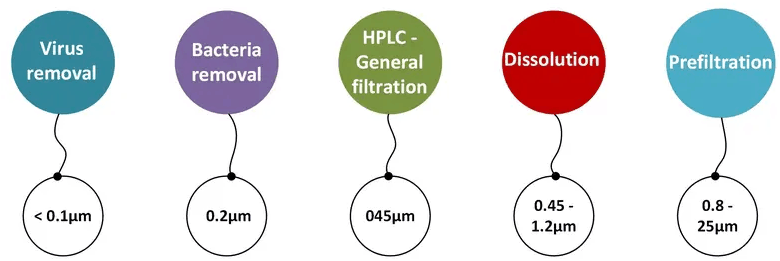
3.What Diamenter of Syringe Filter to Choose 13mm, 25mm or 33mm?
Selecting a Syringe Filter Diameter Depends on your specific application requirements. Here are a few key points that may help guide your decision
Sample Volume: For smaller sample volumes (under 12ml), such as those below, 13mm syringe filters may provide adequate filtration solutions. They're compact in size and ideal for filtering smaller samples directly into vials or containers.
Filtration Area: Filtration area increases with filter diameter. A larger such as 25mm syringe filter or 33mm syringe filter will provide greater surface area, enabling faster filtration rates and higher flow rates. If you require faster filtering for larger volumes or require quicker processing times, larger diameter filters might be the better solution.
Compatibility with Equipment: When choosing your syringe filter diameter, ensure it fits securely onto your syringe or filtration apparatus without leakage or compatibility issues.
If your sample volume is limited and cannot afford any sample loss during filtration, selecting a smaller diameter filter may be in order. These small syringe filters typically feature lower holdup volumes which helps minimize sample loss during filtering.
Space and Storage: If space is at a premium in your lab or storage area, smaller diameter syringe filters take up less space and are easier to store compared to their larger counterparts.
Important to bear in mind when selecting a syringe filter diameter 13mm, 25mm or 33mm for optimal filtration performance is its membrane material, pore size and other specifications. When considering these variables for your specific application such as desired flow rate, efficiency, sample volume etc it is best to assess which filter diameter best meets these needs and use these to guide decision.
| Parameters |
13mm |
25mm |
33mm |
| Membrane material |
Nylon/PP |
Nylon/PP |
Nylon/PP |
| Housing Material |
PP |
PP |
PP |
| Filter diameter (mm) |
13 |
25 |
33 |
| Filtration area (cm²) |
0.65 |
3.9 |
4.6 |
| Normal Pore Size (μm) |
0.22/0.45 |
0.22/0.45 |
0.22/0.45 |
| Holdup volume (μl) |
<10 |
<30 |
<55 |
| Sample volume (ml) |
<12 |
<100 |
<140 |
| Maximum Operating Temperature |
100°C |
100°C |
100°C |
| Maximum Operating Pressure (psi) |
75 |
95 |
110 |
| Applicable pH value |
3-12 |
3-12 |
3-12 |
4.Sterile or Non-Sterile?
When selecting filters for use, your application may call for sterile filtration. When this is the case, look for individually packaged and labeled as sterile syringe filters from syringe manufacturer syringe filters Inc. Additionally, take into consideration their sterilization method since not all may be appropriate for autoclaving or other methods of sterilization.
5.Compatibility With Solvents and Solutions
It is of vital importance that your filter material be compatible with the solvents and solutions being used in your application, especially since some membranes can become susceptible to swelling or degradation when exposed to certain solvents or aggressive chemicals. Ensure your syringe filter can withstand all chemicals you plan on working with to avoid filter failure or sample contamination.
6.Autoclavability
If sterilization of your syringe filters by autoclaving is your preferred sterilization method, make sure the filter material can withstand the high temperatures and steam conditions present during autoclaving without degrading or losing its filtration properties. Ensure the filter you select matches up with your sterilization method of choice to ensure an ideal experience!
Futher Knowledge about how to choose the syringe filter,please check this article: How to Select the Correct Syringe Filter for Your Sample Preparation?
How to Use A Syringe Filter? 9 Step Instructions
Step1.Gather Your Materials
In order to filter a sample successfully, you will require the syringe filter, an appropriate size syringe, the sample in question and any adapters or connectors necessary.
Step2.Assemble the Syringe
Secure the syringe to the outlet end of its filter to avoid leakage during filtration, using adapters or connectors if necessary to match sizes of both components.
Step3.Prepare the Sample
If your sample is stored in a container, move it to an appropriate vessel or syringe for filtration and ensure it is well mixed and free from large particles or debris that could clog your filter.
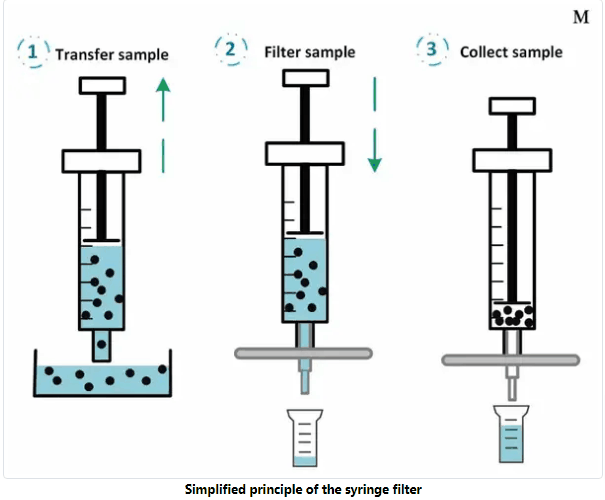
Step4.Wet the Filter Before Use (Optional)
Certain syringe filters require wetting prior to use in order to eliminate air bubbles or increase filter efficiency, so referring to your manufacturer's instructions regarding whether wetting is necessary and its appropriateness are key factors when determining this step's necessity and procedure.
Step5.Load Your Sample
Gently pull back the plunger of the syringe to load your sample into it without creating air bubbles, and make sure that an appropriate volume of sample has been filled into it; remembering to consider your filter's maximum sample volume recommendation when filling up your syringe with samples.
Step6.Filter Your Sample
Hold the syringe vertically with its outlet end pointed down. Slowly and steadily push down on the plunger to force sample through its filter at an ideal flow rate to prevent excessive pressure or filter damage; for larger volumes you may require multiple batches for effective filtering.
Step7.Collect the Filtrate
Once the filtrated liquid passes through a syringe filter, it should be collected into an appropriate container labelled appropriately for identification purposes.
Step8.Discard the Syringe Filter
Once finished with filtration, take care to dispose of the syringe filter properly according to your laboratory's waste management guidelines. Most single use syringe filters should be properly disposed of after one use only.
Step9.Clean and Store Equipment (if applicable)
When planning on reusing syringes or other filtration equipment from previous lab sessions, ensure proper sterilization according to laboratory protocol before drying and storing for maximum integrity.
As each syringe filter manufacturer provides specific instructions, it is crucial that you follow them when operating their products. Furthermore, ensure you work in an environment which minimizes sample contamination during filtration.
What Is the Difference Between the 0.45 And 0.22 Filters? 11 Angels To View
Here's an expanded comparison table highlighting the differences between 0.45μm and 0.22μm syringe filters:
| Parameters |
0.45μm Filter |
0.22μm Filter |
| Membrane Material |
Various options (e.g., PES, PVDF, Nylon) |
Various options (e.g., PES, PVDF, Nylon) |
| Pore Size |
0.45μm |
0.22μm |
| Filtration Efficiency |
Suitable for general filtration and particle removal, but may allow smaller
particles to pass through |
Provides higher filtration efficiency and removes smaller particles,
including bacteria and some viruses |
| Applications |
General filtration of aqueous solutions, sample clarification, removing
particulates, and reducing microbial contamination |
Sterilization of liquids, removal of bacteria and microorganisms, filtration of
sensitive samples, and critical applications where a higher level of purity is required |
| Sample Compatibility |
Compatible with most aqueous solutions and non-aggressive solvents |
Compatible with aqueous solutions and some organic solvents, but may have
limitations with aggressive solvents |
| Flow Rate |
Generally higher flow rates compared to 0.22μm filters |
Slightly lower flow rates due to smaller pore size |
| Holdup Volume |
Typically low holdup volume, minimizing sample loss |
Low holdup volume, minimizing sample loss |
| Typical Use Cases |
Routine laboratory filtration, sample preparation, particle removal
in non-sterile applications |
Sterilization and removal of bacteria in sensitive samples, cell culture media filtration,
preparation of injectable solutions, and applications requiring aseptic filtration |
| Microorganism Retention |
Not suitable for sterile filtration as it allows some bacteria and
microorganisms to pass through |
Provides sterile filtration by retaining bacteria and larger microorganisms |
| Regulatory Standards |
Meets general filtration requirements |
Meets more stringent requirements for sterilization and critical applications |
| Maximum Operating Pressure |
Typically up to 75 psi |
Typically up to 75 psi |
What Is the Purpose of the 0.45-Micron Filter? 5 Points Need to Understand
0.45micron filters remove particulate matter and clarify liquids used in various laboratory and industrial applications, among other uses. Here are some key points about why 0.45-micron filters may be beneficial.
Particle Removal
A 0.45-micron filter's primary function is to effectively filter out particles and debris from liquid samples. By acting as a barrier and trapping particles larger than 0.45 microns in size, these filters help improve quality, clarity, and cleanliness by eliminating larger particulates like sediment debris dust and other visible contaminants from being present in liquid samples being filtered.
Sample Clarification
In many applications, it's essential to produce clear and visually appealing liquid samples. A 0.45-micron filter's filtration process can remove suspended particles that might create cloudiness or turbidity within samples; this step is especially crucial when preparing samples for analysis, microscopy, or visual inspection; producing clear liquids for downstream processes or final product appearance is another application of 0.45-micron filtration's benefits.
Protection of Instruments and Systems
Employing a 0.45-micron filter helps protect sensitive instruments, equipment, and processes from possible particulate matter damage. Particles in chromatography can create blockages that affect column performance or interfere with detector readings; by employing such a filter instead, they can be effectively eliminated, thereby minimizing instrument or system fouling risk while increasing analytical accuracy and prolonging equipment longevity.
Preliminary Filtration
The 0.45micron filter is often utilized as a practical pre-filtration step before more downstream processes take place, acting as a primary filter to remove larger particles that could clog or compromise more sensitive systems and filters further downstream. By employing such a pre-filter, subsequent filtration steps may become more efficient and their lifespan extended significantly.
Non-Sterile Applications
Although 0.45-micron filters provide effective particulate removal, they should not be used for sterile filtration applications (removing bacteria or viruses entirely) since their pores could remain open after filtering through. In such applications, filters with smaller pores (say 0.22 microns or smaller) would be recommended instead.
Overall, the purpose of the 0.45-micron filter is to provide effective particle removal and clarification in liquid applications for improved sample quality, protection of instruments, and expediting downstream processes.
What Is the Difference Between 0.2 And 0.22 Micron Filters? 8 Angles to Compare
0.2 and 0.22 micron filters are commonly used for fine filtration and sterile filtration purposes. While they have similar applications, there are slight differences between the two.
Here's a table that highlights the differences between 0.2 and 0.22 micron filters:
| Parameters |
0.2 Micron Filter |
0.22 Micron Filter |
| Pore Size |
0.2 microns |
0.22 microns |
| Particle Retention Efficiency |
Higher retention efficiency for smaller particles |
Slightly lower retention efficiency for smaller particles |
| Sterile Filtration |
Suitable for sterile filtration, removing bacteria and some viruses |
Suitable for sterile filtration, removing bacteria and some viruses |
| Flow Rate |
Slightly lower flow rate due to smaller pore size |
Slightly higher flow rate due to larger pore size |
| Applications |
Critical applications requiring high-level sterilization, removal of
bacteria and smaller microorganisms |
Critical applications requiring sterilization, removal of bacteria, and
larger microorganisms |
| Sample Compatibility |
Compatible with aqueous solutions and some organic solvents, but
may have limitations with aggressive solvents |
Compatible with aqueous solutions and some organic solvents, but may
have limitations with aggressive solvents |
| Microorganism Retention |
Provides higher retention efficiency for smaller microorganisms such
as viruses |
Provides lower retention efficiency for smaller microorganisms
compared to a 0.2-micron filter |
| Regulatory Standards |
Meets more stringent requirements for sterilization and critical applications |
Meets regulatory requirements for sterilization and critical applications |
It's important to note that while there are slight differences in particle retention efficiency and flow rate between 0.2 and 0.22 micron filters, both are commonly used for sterile filtration and removing bacteria. The choice between the two depends on the specific requirements of your application and the level of sterilization needed. Always refer to the manufacturer's specifications and guidelines for proper filter selection and usage to ensure accurate and reliable results.
What Are the Advantages of Using A Syringe Filter? 8 Points Need to Know
1.Filtration Efficiency
Syringe filters offer effective and reliable filtration for liquids. Their precise pore sizes ensure reliable filtration for consistent and accurate results.
2.Sample Protection
Syringe filters offer reliable sample protection by filtering out particles and debris that might otherwise block analytical instruments, chromatography columns, or any downstream processes. By doing so, they help preserve samples while prolonging equipment lifespan for lower maintenance costs and greater overall efficiency.
3.Versatility
Syringe filters come equipped with an assortment of pore sizes, membrane materials, and sizes (diameters and volumes) to meet specific application needs. Their versatility enables selection based on application needs; whether that means filtering small or large volumes at once; filtering out large particles or microorganisms from samples; or working with various solvents or sample types - there's sure to be one syringe filter available that fits.
4.Time and Cost Savings
Syringe filters provide an efficient and cost-efficient solution to meet filtration needs, designed for single use without the need for cleaning, maintenance or validation between uses. Furthermore, their relatively affordable price point means less overall expenditure without compromising filtration efficiency.
5.Sterile Filtration
Certain syringe filters are designed specifically for sterile filtration, making them the perfect solution for applications requiring aseptic conditions. Individually packaged and labeled as such to guarantee the purity and sterility of the filtrate produced; such filters can be found widely used in pharmaceutical, biotechnology, and microbiology industries where eliminating microorganisms is crucial.
6.Ease of Use
Syringe filters are easy to use and require minimal setup or training to operate effectively. Simply attaching it to a syringe allows the filtering process to begin by gently pressing down on its plunger; making syringe filters an ideal choice both for laboratory filtration as well as field applications that demand portability and simplicity.
7.Scalability
Syringe filters come in various sizes and formats to meet a range of sample volumes, from microliters to several liters. No matter what your filtering needs are, Syringe filters can easily be scaled up or down depending on what works for your sample volume needs.
8.Syringe Filters Find Applications in Numerous Industries
Syringe filters find usage across industries such as pharmaceuticals, biotechnology, environmental analysis, food and beverage manufacturing, and research laboratories. Their wide variety of uses ranges from sample preparation, particle removal, sterilization, clarification, and purification processes - providing versatility and adaptability across workflows and sample types.
When selecting a syringe filter, it is crucial to take into account factors like membrane material, pore size, sample compatibility, and specific filtration requirements for your application. This ensures optimal performance while taking full advantage of all its advantages.
Typical Particle Sizes
Typical particle sizes that can be filtered using syringe filters:
| Particle Type |
Particle Size (µm) |
| Gelatinous Precipitates |
Metal hydroxides |
25-40 |
| Precipitated silica |
25-40 |
| Crystalline Precipitates |
Ammonium phosphomolybdate |
20 |
| Calcium oxalate |
15 |
| Lead sulphate |
10 |
| Barium sulphate (hot ppt.) |
8 |
| Barium sulphate (cold ppt.) |
3 |
| Blood Cells |
Platelets |
2-3 |
| Erythrocytes (average) |
7 |
| Polymorphs |
8-12 |
| Small lymphocytes |
7-10 |
| Large lymphocytes |
12-15 |
| Monocytes |
16-22 |
| Bacteria* |
Cocci |
0.5 |
| Bacilli |
1.0 x (1.0-1.0) |
| Serratia marcescens |
0.5 x (0.5-1.0) |
| Pneumococcus |
1 |
| Bacillus tuberculosis |
0.3 x (2.5-3.5) |
| Amoeba |
12月30日 |
| E.coli |
0.5 x (1.0-3.0) |
| Smallest bacteria |
0.22 |
| Other Microorganisms, etc. |
Yeast cells |
2.0-8.0 |
| Tobacco smoke |
0.5 |
| Colloids |
0.06-0.30 |
| Rye grass pollen |
34 |
| Ragweed pollen |
20 |
| Puffball spores |
3.3 |
This table provides a range of typical particle sizes for various substances, including gelatinous precipitates, crystalline precipitates, blood cells, bacteria, and other microorganisms. It serves as a reference for understanding the particle sizes that can be effectively filtered using syringe filters.
Can Syringe Filters Be Reused? 5 Points to Consider
Syringe filters are typically designed for single-use applications and should not be reused. Here are a few points about reusing syringe filters:
1.Disposable Design
Most syringe filters are disposable filtration devices made of materials that may not withstand repeated use or cleaning procedures, leading to damage or clogging during filtration processes, rendering subsequent filters less effective, and possibly leading to sample contamination or inaccurate results. Reusing such filters could compromise their filtration effectiveness and lead to sample contamination or inaccurate results.
2.Reusing Syringe Filters Creates Risk
Reusing syringe filters introduces an increased risk of cross-contamination between samples or processes, even with proper cleaning and sterilization protocols in place. Even under optimal circumstances, it may not be possible to ensure the complete removal of all contaminants from filter membranes; thus compromising the integrity and purity of subsequent samples, potentially leading to inaccurate analyses or compromised experiments.
3.Reducing Filtration Performance
Overuse of Syringe Filters may result in reduced filtration performance. Over time, filter pores may become blocked or damaged and flow rate and efficiency reduced significantly, leading to slower filtration, increased pressure requirements, or even filter failure compromising the accuracy and reliability of the filtration process.
4.Filtration Reuse Concerns
Reusing syringe filters that have been sterilized before being reused may introduce potential contamination that defeats the purpose of sterile filtration. Reusing these filters increases contamination risk, potentially defeating its purpose of providing sterile airway conditions.
5.Cost Considerations
Syringe filters are generally affordable, making them cost-effective for single-use applications. Reusing existing filters would require additional cleaning, sterilization, and validation steps that could negate any cost-savings benefits; given their relatively low price point, it is often more economical and practical to purchase new disposable filters each time filtration processes are necessary.
Although researchers may attempt to clean and reuse syringe filters, this practice is typically discouraged by manufacturers as it compromises the reliability and accuracy of filtration processes. Therefore, it is advisable that researchers follow the instructions of manufacturers regarding single-use filters in order to achieve maximum performance and avoid sample contamination risk.
Syringe Filter Pricing – What is a “Good” Price?
As is often the case, more well-known brand names mean higher prices. When it comes to PES 0.45 micron 25mm bulk non-sterile syringe filters, GE Whatman filters cost well over $3.00 each to top the list, followed by Fisher and VWR private label filters averaging around $1.25. On the lower end, U.S. companies that import from Asia under their brands sell these filters at roughly $0.80 each; direct from China you could potentially obtain these filters for around $0.40 without including shipping charges!
Are Brand Names Worth the Price?
If you use 10,000 filters annually and buy $3.00 filters, your annual costs could exceed $30,000. At the other end of the spectrum are $4 filters which would cost $4,000. So the question arises as to whether the $26,000 difference between filters would make an impactful statement about whether parallel testing for an assay re-validation may warrant extensive parallel testing in its favor or otherwise.
Why you Want to Paying More for the Syringe Filter?And Which Risk You will Meet?
But oftentimes this huge difference exists because laboratory professionals simply aren't willing to risk adding a variable that might alter an established test. So the question becomes what are the risks? And can your testing be affected by adding variables? So let's consider what those risks could be:
[1] Sample Contamination
Contamination can arise from two sources; cleanliness of the syringe filter and whether chemicals being filtered leach materials from it and housing. Another potential source may be overpressuring, which causes it to rupture, allowing non-filtered material through and into your sample (this should be easily detectable when its plunger goes from hard pushing to effortless).
[2] Sample Retention
Does the filter material or housing interfere with your sample and prevent its complete release?
Filter Clogging/Backpressure. Overloading filters with particulates or high-viscosity materials can lead to filter rupture at worst or serious hand/wrist cramps for lab workers if the volume of particles/viscosity materials is excessive; should this occur, the issue should become evident through lab reports. A pre-filter may help, or better yet - keeping an extra one available should it become necessary when handling particularly dirty samples.
[3] DNA/RNA/Ultra-Low Particulates
If human contamination is a concern beyond just sterilization, purchasing syringe filters manufactured entirely machine in a clean room environment would be best and these will cost more.
How to Order A Syringe Filter?12 Complete Steps to Guide
Ordering a Syringe Filter is an easy and straightforward process. Please follow these steps:
Step1.Establish your Filtration Requirements
Consider the nature of your sample, desired pore size, solvent compatibility requirements, and any specific application needs when setting out your filtering needs.
Step2.Select the Right Filter Material
Choose a filter material suited to your requirements, such as PTFE, nylon, cellulose acetate, or PVDF depending on chemical compatibility and filtration efficiency.
Step3.Find Your Filter Size
Syringe filters come in sizes that typically range from 13mm to 25mm in diameter; find one that best meets the needs of both your sample volume and syringe compatibility.
Step4.Select a Pore Size
Select a pore size you need to remove as your starting point and choose an optimal pore size (typically between 0.2 microns to 0.45 microns; however other options exist).
Step5.Select a Connector Type
Think carefully about whether you require a luer lock or slip connector based on the setup of your syringe or filtration device.
Step6.Quantity
Determine how many syringe filters you require. They typically come packaged together, so select an amount that meets your needs.
Step7.Research and Select a Supplier
Search for reliable manufacturers or suppliers of syringe filters that offer quality, pricing, customer reviews, and shipping options.
Step8.Order Your Filters
To place your order, visit your supplier's website or reach out to their sales department and provide all the required details such as filter material, size, pore size, and connector type - along with desired quantity - of filters needed.
Step9.Provide Shipping and Payment Details
Provide your address for shipping as well as your preferred payment method when placing your order.
Step10.Review and Confirm
To ensure the best experience during checkout, always carefully check that all details of your purchase have been confirmed, including specifications and quantities of filters you are purchasing.
Step11.Complete Your Payment
To complete your order successfully, make sure that you follow the payment instructions of the supplier and follow their payment procedures to complete it.
Step12.Track Your Orders
If the supplier provides tracking numbers, take note and track its progress as the shipment reaches you. By following these steps, you can quickly order the Syringe filters that best match your filtration requirements.
Other 6 Important Faqs about Syringe Filter
1.Do Syringe Filters Remove Bacteria?
Syringe filters can successfully filter bacteria out of liquids. Pore size plays an essential part in bacteria removal - typically, filters with pores of 0.2 microns or smaller are effective at eliminating harmful organisms from liquids.
2.PVDF Filters Are Hydrophilic or Hydrophobic?
PVDF Filters Are Hydrophilic or Hydrophobic Polyvinylidene fluoride (PVDF) filters can either be hydrophilic or hydrophobic depending on their surface treatment. Although native PVDF membranes are naturally hydrophobic and repel liquid, hydrophilic treatments make PVDF filters hydrophilic by allowing water through.
3.Which Membrane Should I Use to Filter Cell Culture Media?
When filtering cell culture media, the optimal membrane should be hydrophilic yet have low protein binding properties. Polysulfone (PSU) and cellulose acetate (CA) membranes are popular options due to their compatibility with aqueous solutions and reduced protein binding capabilities.
4.Most Frequently Used Membrane Pore Sizes?
The two most frequently utilized membrane pore sizes for syringe filters are 0.2 microns and 0.45 microns, as these sizes are suitable for sterilization, clarification, particle removal applications as well as sterilization processes. Certain applications may need different pore sizes depending on the particles that need filtering out.
5.Why Is a Syringe Filter Necessary for HPLC Sample Preparation?
Its Syringe filters play an essential part in HPLC sample preparation by filtering out particulate matter and maintaining sample integrity, thus avoiding clogs of HPLC columns which could produce inaccurate results and cause damage. In addition, Syringe filters remove microorganisms or contaminants which might interfere with analysis, further increasing reliability and reproducibility in measurements conducted via HPLC.
6.Can Syringe Filters Be Autoclaved?
Most syringe filters are intended for single use and should not be autoclaved as this could compromise their integrity and performance, leading to decreased filtration efficiency. Therefore, it is wise to follow manufacturer recommendations when using these syringe filters; dispose of them after every use as instructed. However, there are specific autoclave filters designed specifically to withstand high temperature and pressure environments like those found within an autoclave.

 English
English
 Chinese
Chinese
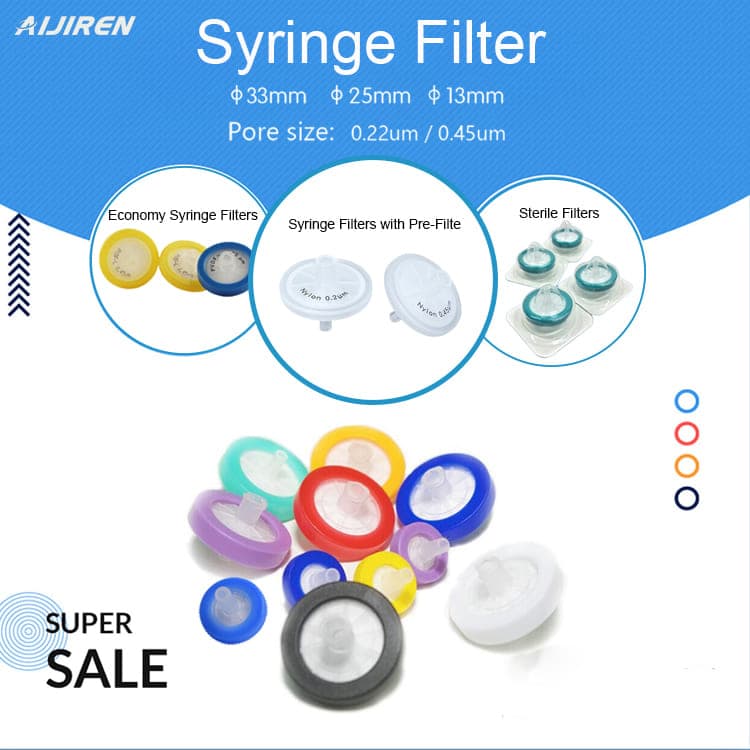
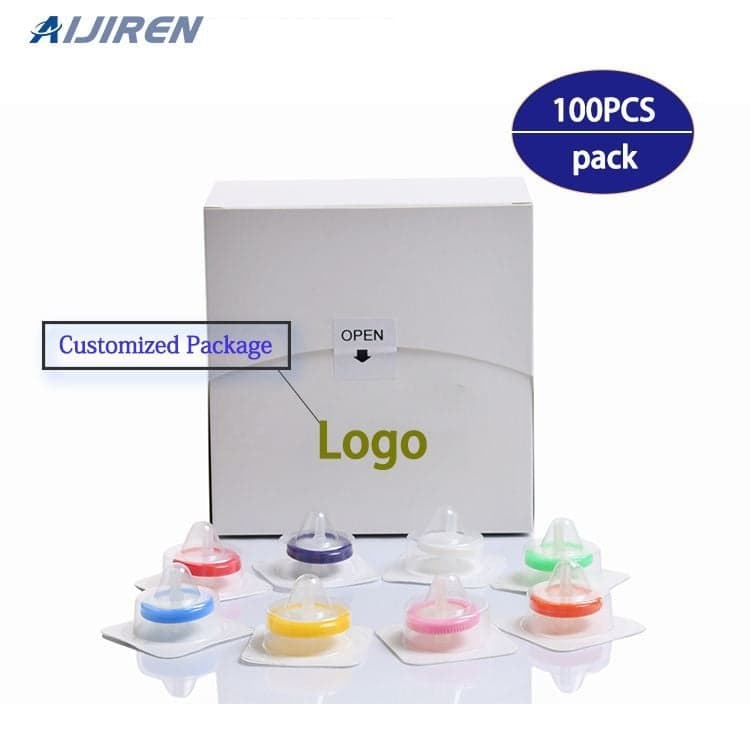
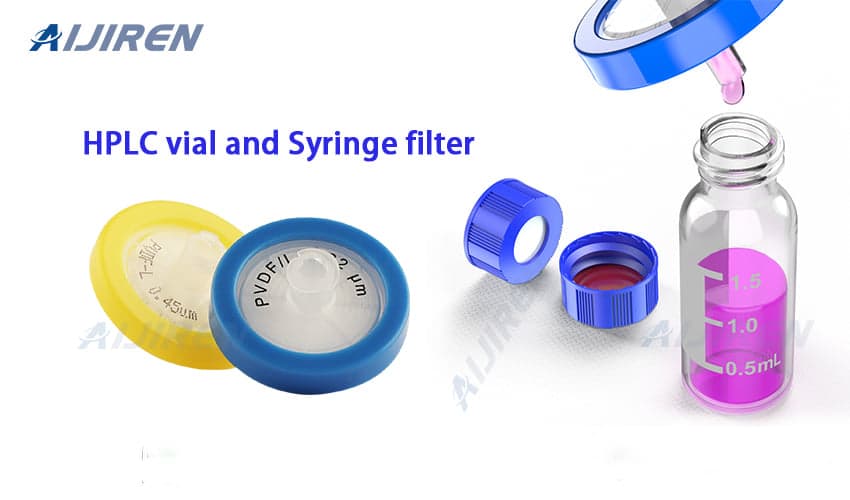


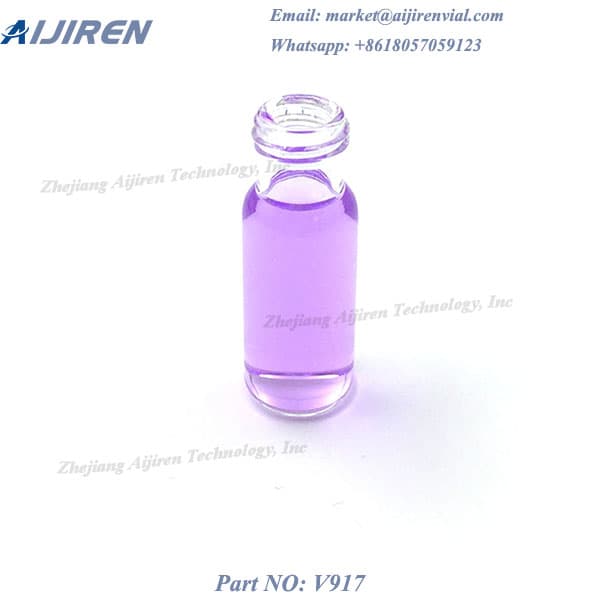
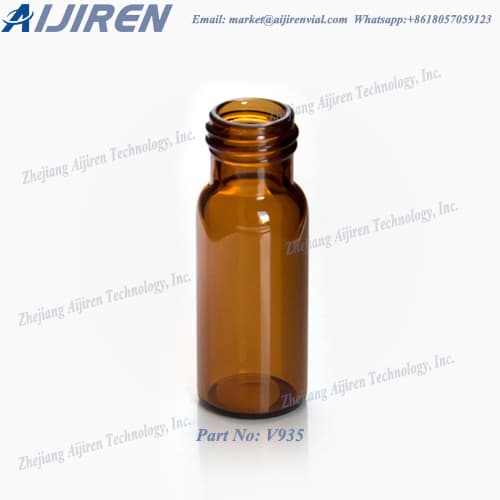

.jpg)
